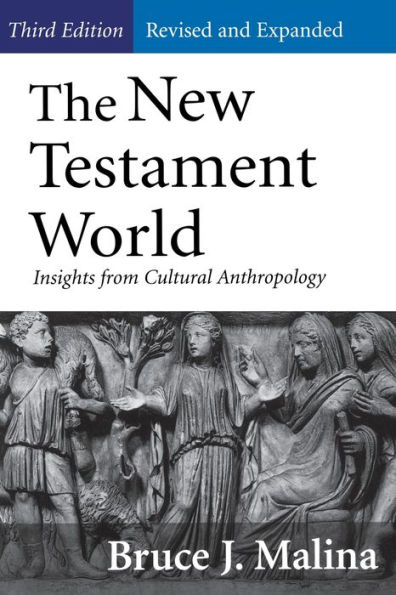| Preface | xi |
| Acknowledgments | xv |
| Introduction: Bible Study and Cultural Anthropology | 1 |
| Presuppositions behind This Book | 7 |
| Nature, Culture, Person | 7 |
| Understanding Culture | 11 |
| The Bigger Picture--Cultural Cues | 13 |
| Why the Bigger Picture--Humans as Model Makers | 17 |
| Models in Cultural Anthropology | 19 |
| Summary | 24 |
| References and Suggested Readings | 25 |
| 1. | Honor and Shame: Pivotal Values of the First-Century Mediterranean World | 27 |
| Understanding Honor | 30 |
| How Does a Person Get a Grant of Honor? | 32 |
| How Honor Is Acquired | 33 |
| Honor Symboled by Blood | 36 |
| Honor Symboled by Name | 37 |
| How Honor Is Displayed and Recognized | 38 |
| Honor and the Interpretation of a Challenge | 40 |
| Honor and Going to Court | 43 |
| Dimensions of Collective Honor | 43 |
| Honor and the Moral Division of Labor: The Double Standard | 46 |
| Toward Defining Honor and Shame | 48 |
| A Significant Clarification | 51 |
| Summary | 52 |
| References and Suggested Readings | 56 |
| 2. | The First-Century Personality: The Individual and the Group | 58 |
| The First-Century Personality | 58 |
| Group-Oriented Personality | 60 |
| The Makeup of Human Beings: A Three-Zone Model | 68 |
| The Makeup of Human Beings and God | 71 |
| Summary | 75 |
| References and Suggested Readings | 79 |
| 3. | The Perception of Limited Good: Maintaining One's Social Status | 81 |
| Ruralized Society | 81 |
| Kinship | 82 |
| Politics | 83 |
| City and Country | 83 |
| The Preindustrial City | 85 |
| Limited Good: A Basic Cue of Perception | 89 |
| The Honorable Person's Defensive Strategy | 90 |
| The Honorable Person's Dyadic Alliances | 93 |
| Limited Good and the Accumulation of Wealth | 97 |
| Limited Good and Personal Causality | 100 |
| Limited Good and the Structured Social World | 104 |
| Summary | 105 |
| References and Suggested Readings | 106 |
| 4. | Envy--The Most Grievous of All Evils: Envy and the Evil-Eye in the First-Century Mediterranean World | 108 |
| The Social Roots of Envy | 108 |
| Envy and Honor Concerns | 110 |
| Envy and Limited Good | 112 |
| Observing Envy | 118 |
| Evil Eye: Proof of Envy | 120 |
| Protection against the Evil Eye | 123 |
| Protection against Envy | 125 |
| Envy Is Not Jealousy | 126 |
| Envy Is Not Hate | 128 |
| Envy Enters the Ten Commandments | 129 |
| Summary | 130 |
| References and Suggested Readings | 132 |
| 5. | Kinship and Marriage: Fusing Families Together | 134 |
| Kinship | 134 |
| Main Structural Features of the Kinship System Compared | 136 |
| Marriage | 143 |
| Marriage Strategies in the Bible | 145 |
| The Patriarchal Immigrant Period | 146 |
| The Israelite Period | 147 |
| The Postexilic Period | 150 |
| The Pauline Period | 154 |
| The Post-Pauline Period | 157 |
| Summary | 158 |
| References and Suggested Readings | 159 |
| 6. | Clean and Unclean: Understanding Rules of Purity | 161 |
| Sacred and Profane | 161 |
| Purity: Clean and Unclean | 164 |
| Anomalies and Abominations | 165 |
| General Israelite Perspectives | 170 |
| Classification of Persons in Israel | 173 |
| Classification of Clean and Unclean Animals | 177 |
| Sanctifying and Sacrifice | 180 |
| Purity Arrangements in Post-Jesus Groups | 187 |
| Summary | 196 |
| References and Suggested Readings | 196 |
| 7. | How Jesus Groups Evolved: Understanding Group Development | 198 |
| Why Small Groups At All | 201 |
| Stages of Small Group Development | 207 |
| Forming Jesus Groups | 208 |
| Storming in Jesus Groups | 208 |
| Norming in Jesus Groups | 209 |
| Performing in Jesus Groups | 209 |
| Jesus Groups Adjourn | 210 |
| Small Group Focuses | 211 |
| Social Movement Organization: Fictive Polity | 212 |
| Countermovement Organizations: Pharisees and Others | 212 |
| Elective Associations: Fictive Kin Groups | 214 |
| Summary | 217 |
| References and Suggested Readings | 219 |
| A Theological Conclusion | 221 |
| Study Questions for Testing the Hypothesis | 223 |
| Indexes | 245 |
| Index of Scriptural References | 245 |
| Index of Ancient Authors | 251 |
| Index of Subjects and Names | 252 |
| Figures and Tables | |
| Figures | |
| Figure 1. | The Basic Presupposition--Nature, Culture, Person | 8 |
| Figure 2. | Challenge and Response | 34 |
| Figure 3. | Honor and Shame: Moral Division of Labor | 50 |
| Figure 4. | Marriage Strategies in the Bible | 159 |
| Tables | |
| Table 1. | Contrasting Child Rearing Approaches | 54 |
| Table 2. | Contrasting U.S. Persons with Ancient Mediterraneans | 76 |
| Table 3. | Envy in U.S. Experience and Ancient Mediterranean Experience | 131 |
| Table 4. | Jesus' Group and Post-Jesus Groups Compared | 218 |



